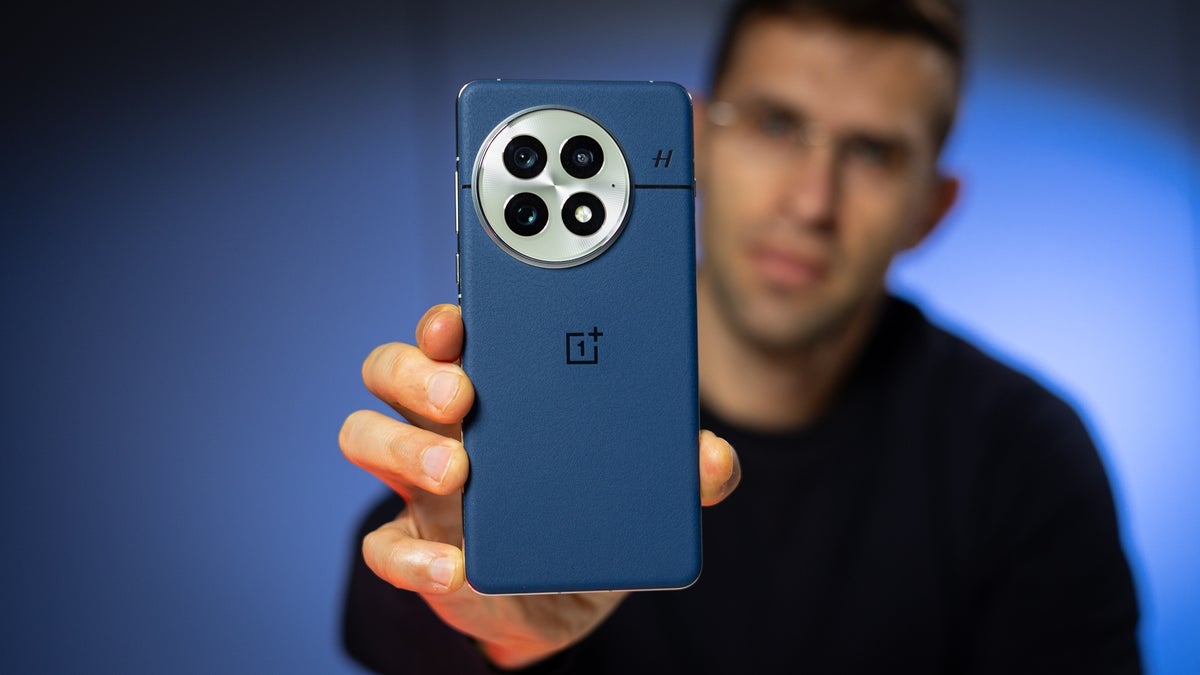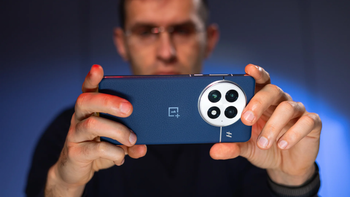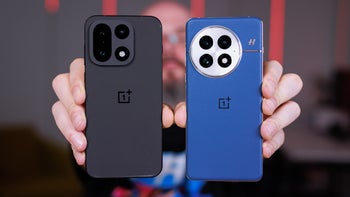OnePlus 13 release date, price, specs, and must-know features

The OnePlus 13 is finally official, the company announced the flagship on January 7, 2025. This phone is the follow-up of the last-gen OnePlus 12, which was released in December of 2023.
The previous OnePlus 11 and OnePlus 12 were very similar externally, and the OnePlus 13 doesn't stray too far off in that regard. This exciting new phone is also powered by the latest and greatest Qualcomm silicon - the Snapdragon 8 Elite - which is already stunning the world in synthetic benchmarks and sending a chill down Apple's spine.
The specs sheet is really impressive and the OnePlus 13 is shaping out to be the Android phone to beat this year, so without further ado, here's everything you need to know about the OnePlus 13.
Jump to section:
OnePlus 13 release date
- January 7, 2025
On December 17, 2024 OnePlus tweeted out an official statement for the OnePlus 13 series launch event. The OnePlus 13 made its global debut on January 7, 10:30 a.m. EST.
| Device | Announcement | Global release |
|---|---|---|
| OnePlus 10 Pro | January 4, 2022 | April 14, 2022 |
| OnePlus 11 | January 4, 2023 | February 7, 2023 |
| OnePlus 12 | December 4, 2023 | February 6, 2024 |
| OnePlus 13 | October 31, 2024 | January 7, 2025 |
OnePlus 13 price
- 12/256GB starting at $899.99
- 16/512GB starting at $999.99
The price of OnePlus phones has been fluctuating quite a bit recently. The company tried to shoot for the stars with the OnePlus 10 Pro priced at $900, but it seems the market didn't respond well to that, and the OnePlus 11 quickly dropped in price by a whopping $200. Then, with the OnePlus 12, the company kind of increased the base price again. Only kind of — OnePlus simply removed the cheapest, 128 GB memory entry level.
The OnePlus 13 followed the company's pricing strategy from the past few generations and launched at $899.99 for the base 12/256GB model. The version with 16GB of RAM and 512GB of storage is available for $999.99.
| Base variant | Starting price |
|---|---|
| OnePlus 10 Pro 8 GB / 128 GB | $899 |
| OnePlus 11 8 GB / 128 GB | $699 |
| OnePlus 12 12 GB / 256 GB | $799 |
| OnePlus 13 12 GB / 256 GB | $899 |
- Also see: Best OnePlus 13 deals
OnePlus 13 camera
OnePlus continues its collaboration with Hasselblad, and the OnePlus 13 comes with a triple camera system tuned by the photography experts. The main camera is a 1/1.4" 50MP Sony LYT-808 sensor under an f/1.6 lens with focal length equivalent of 23mm. There's a 50MP ultrawide which uses a Samsung JN5 sensor under an f/2.0 lens with focal length 15mm. Finally, there's a periscope zoom lens with 3x optical zoom equivalent or 73mm if we multiply by the main camera. It uses a 1/1.95" 50MP Sony LYT-600 sensor.
- Main wide-angle camera - 50 MP
- Ultra-wide camera - 50 MP
- 3x telephoto camera - 50 MP
OnePlus 13 storage
The OnePlus 13 comes in a two storage configurations globally. They are as follow:
OnePlus 13 memory variants:
- 12GB/256 GB UFS 4.0
- 16GB/512 GB UFS 4.0
OnePlus 13 design
The OnePlus 13 follows the same design philosophy as its predecessors. The signature circular camera housing with Hasselblad branding is still present, slightly offset to the left. The screen is now almost flat with 2.5D curves all around (technically it's called a full depth soft edge straight screen).
The overall design is our "favorite" glass and metal sandwich, but fair play to OnePlus, there's a faux leather option in blue, and it looks very cool. Here's the available colors:
OnePlus available colors:
- Black Eclipse
- Midnight Ocean
- Arctic Dawn
One final design element that's kind of a trademark is the mute slider, it is present on the OnePlus 13 and comes with a textured brushed metal design. There's also some high level water and dust protection. We're talking about an IP69 rating in addition to the more common IP68. Here the "9" stands for high-pressure hot water jets, emphasis on hot. It's an improved rating but we don't recommend boiling the OnePlus 13.
OnePlus 13 display
- 6.82-inch OLED, 3168×1440, 510PPI, 4500nits peak brightness, 1-120Hz refresh rate
OnePlus has been using excellent OLED panels from Samsung for years now, but this year the company has decided to give BOE panels a shot. The OnePlus 13 comes with a 6.82-inch AMOLED panel made by the Chinese manufacturer. It's a LTPO capable of doing 1-120Hz refresh rates dynamically, it also supports 10 bit colors, comes with a 2K resolution (3168×1440), and has a pixel density of 510 PPI.
OnePlus boasted an A++ rating from DisplayMate during the official unveiling event, and also shared a long list of 21 records tied with the display of the OnePlus 13. The listed peak brightness is 4,500 nits, and there's a special Crystal Shield glass to protect the display (with some ceramic fused in it). There are some eye-protection features baked in as well, such as bright eyes and low flicker, full brightness DC dimming, sun display, and sleep mode.
OnePlus 13 battery
- 6,000 mAh, 80W wired charging, 50W wireless charging
OnePlus has managed to cram in a rather big 6,000 mAh battery inside the OnePlus 13. The company calls this battery Glacier Battery and it uses a hybrid silicon-carbon technology, where there's silicon fused into the carbon anode of the battery to improve the overall capacity. Honor was the first brand to commercialize the technology in its Magic 6 Pro series (outside China), and we're now seeing the tech in other Far East brands such as Vivo and now OnePlus.
In terms of charging, the SuperVooc fast charging tech is onboard the OnePlus 13 and strong as ever, offering 80W of wired charging support, and 50W through the proprietary air-cooled wireless charger of the company.
OnePlus 13 features and software
- OxygenOS 15
The OnePlus 13 comes running OxygenOS 15 out of the box. It's based on Android 15 but features the company's own AI, called OnePlus AI. There are helpful tools such as AI Detail Boost (which enhances photo clarity and quality), AI Unblur (as the name suggests, it reduces blur in images), AI Reflection Eraser (a handy feature for taking photos through glass), AI Notes (offering robust assistance with note-taking), Circle to Search, and more.
There's also Gemini onboard, so if you prefer Google's LLM, you can use that. The OnePlus 13 comes with four years of software updates and six years of security patches.
OnePlus 13 update cycle:
- OxygenOS 15 (November 2024)
- OxygenOS 16 (2025)
- OxygenOS 17 (2026)
- OxygenOS 18 (2027, major OS updates end)
OnePlus 13 hardware and specs
- Qualcomm Snapdragon 8 Elite
- 12GB or 16GB of RAM
One of the biggest features of the OnePlus 13 is the silicon onboard, the beating heart of the device, the Snapdragon 8 Elite chipset. This mobile processor has been generating hype in the past couple of months with Geekbench scores showing performance close to (and sometimes better than) the A18 Pro, the current smartphone champion. Below you will find a short specs table.
OnePlus 13 specs:
| Specs | OnePlus 13 |
|---|---|
| Size and Weight | 162.9 x 76.5 x 8.5 mm, 210gr |
| Display | 6.8-inch 1440p, OLED, 1-120Hz, HDR, 10-bit color, P3, Ceramic Guard |
| Processor | Snapdragon 8 Elite 3nm |
| Memory, storage, and prices | 12GB | 256GB - $899.9 (Black Eclipse) 16GB | 512GB - $999.9 (Black Eclipse, Midnight Ocean, Arctic Dawn) |
| Software | OxygenOS 15 (Android 15) 4 years of software support 6 years of secuirity updates |
| Cameras | Main: 50MP Sony LYT-808 1/1.4" sensor, F1.6 Telephoto: 50MP LYT-600 1/1.95" sensor, F2.6 Ultra-wide: 50MP ISOCELL JN5 1/2.75" sensor, F2.0, 120-degree field of view Front: 32MP, F2.4 |
| Battery Size | 6,000mAh |
| Charging Speeds | 80W wired charge 50W wireless charging |
OnePlus 13 Review
We have a comprehensive in-depth review of the newly launched OnePlus 13. Dive deep and learn everything about OnePlus' new flagship, including display tests, camera samples, performance benchmarks, and battery longevity tests.
OnePlus 13 comparisons
Now that the OnePlus 13 has been officially announced we have a couple of comparisons readily available. Below, you can check out how the newly announced OnePlus 13 stacks against its main rivals.
Should I buy the OnePlus 13?
The OnePlus 13 made a serious bid to take the Android crown. The phone comes with top specs all around, from the excellent BOE display, the huge battery, fast charging, ample chipset, to the Hasselblad-infused camera system, this phone shapes out to be the Android flagship to beat.
- You should buy OnePlus 13 if you have a OnePlus 11 or even a OnePlus 9 Pro that needs upgrading. If you also come from older Android flagship such as a Galaxy S22, or an iPhone 12, a potential switch to the OnePlus 13 could bring much to your smartphone table. If you're inside the iOS ecosystem and want to dip your toes into the Android world, the OnePlus 13 could be a great starting point as well.
- You should not buy OnePlus 13 if you've already pulled the trigger on a 2025 flagship such as the iPhone 16 series, or a Galaxy S25. Alternatively, if you own a OnePlus 12 the upgrades might not be substantial enough to justify the switch.
Follow us on Google News
















![A new Android bug is making it impossible to install new apps. Are you affected? [UPDATE]](https://m-cdn.phonearena.com/images/article/176703-wide-two_350/A-new-Android-bug-is-making-it-impossible-to-install-new-apps.-Are-you-affected-UPDATE.webp)
